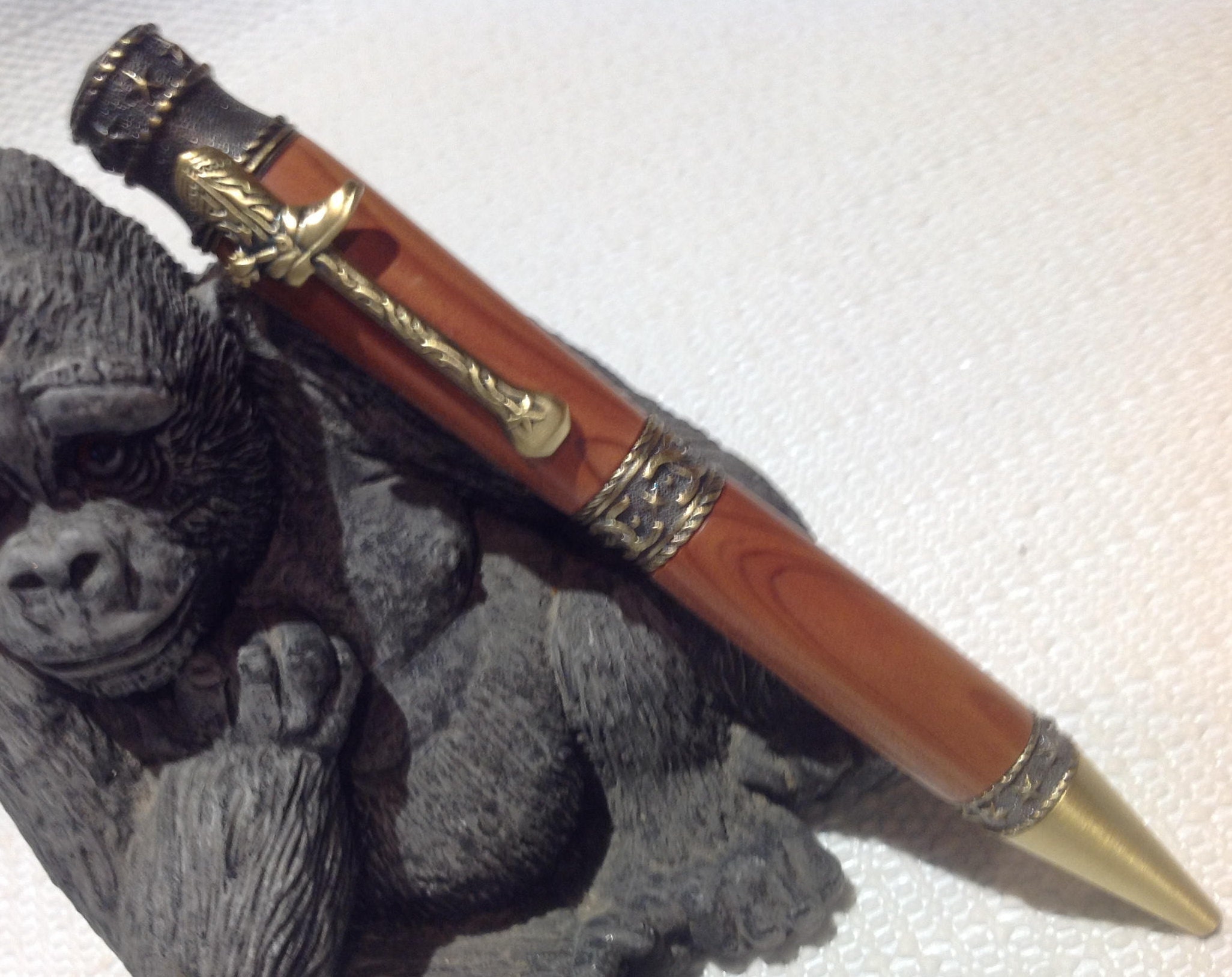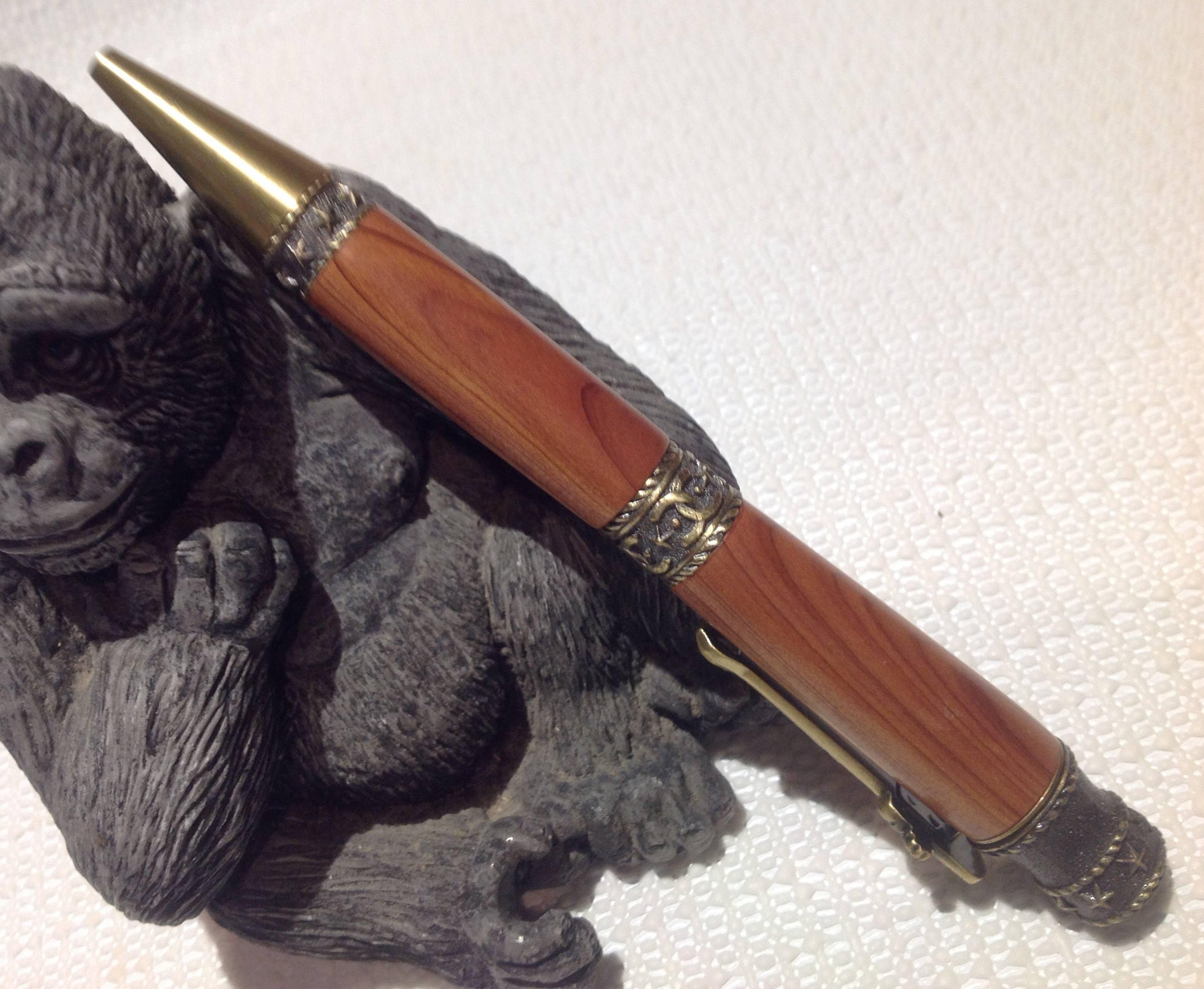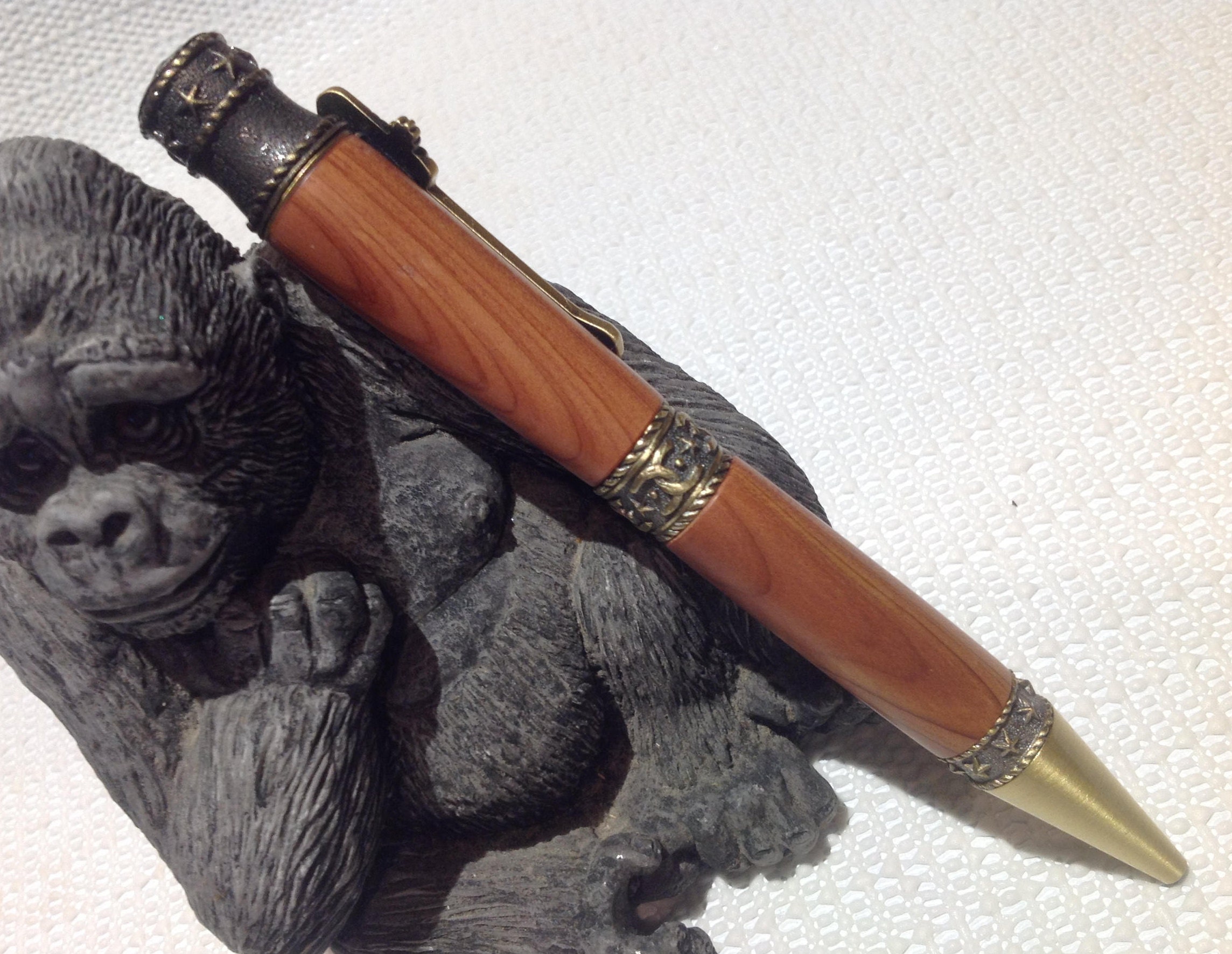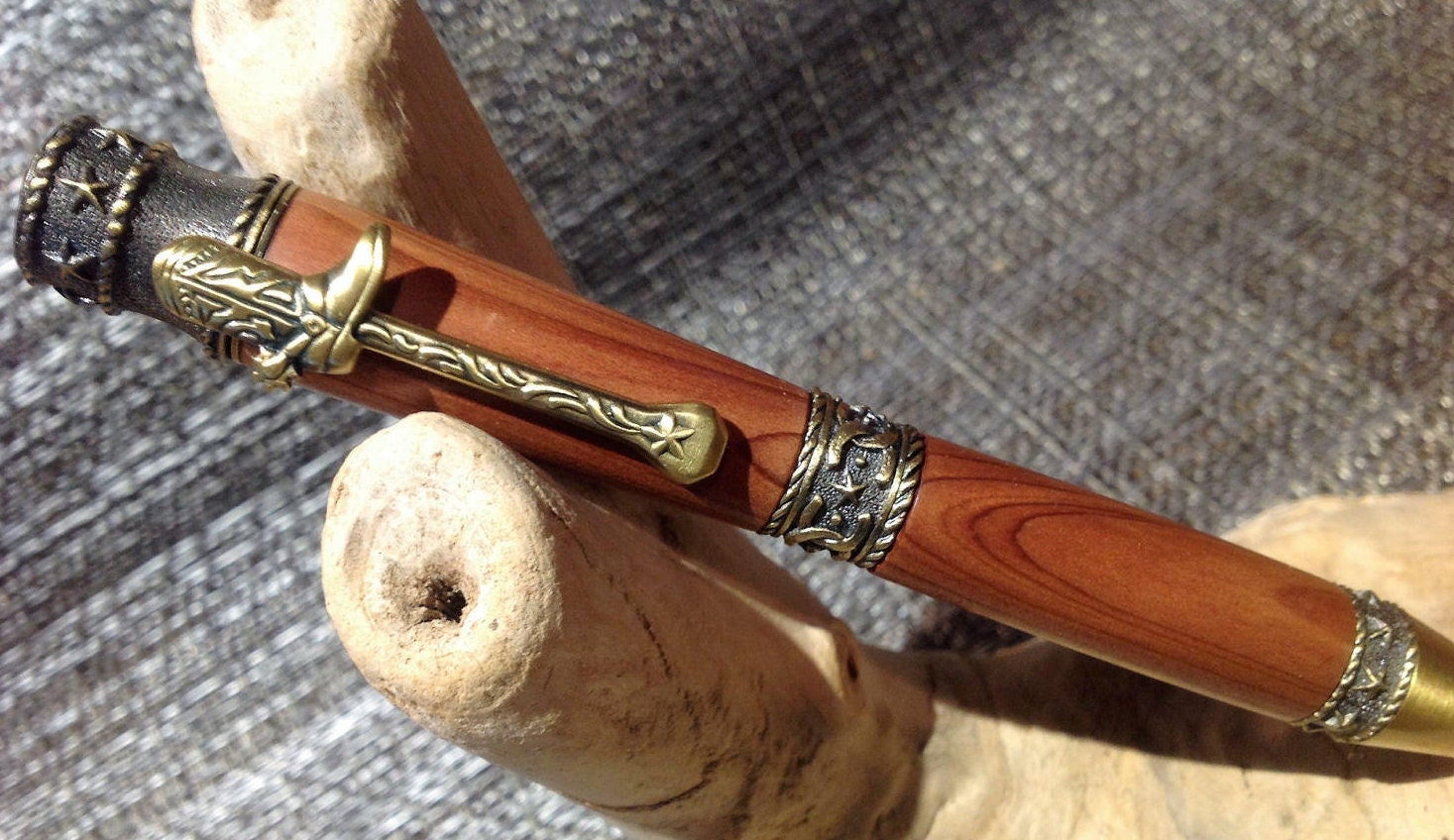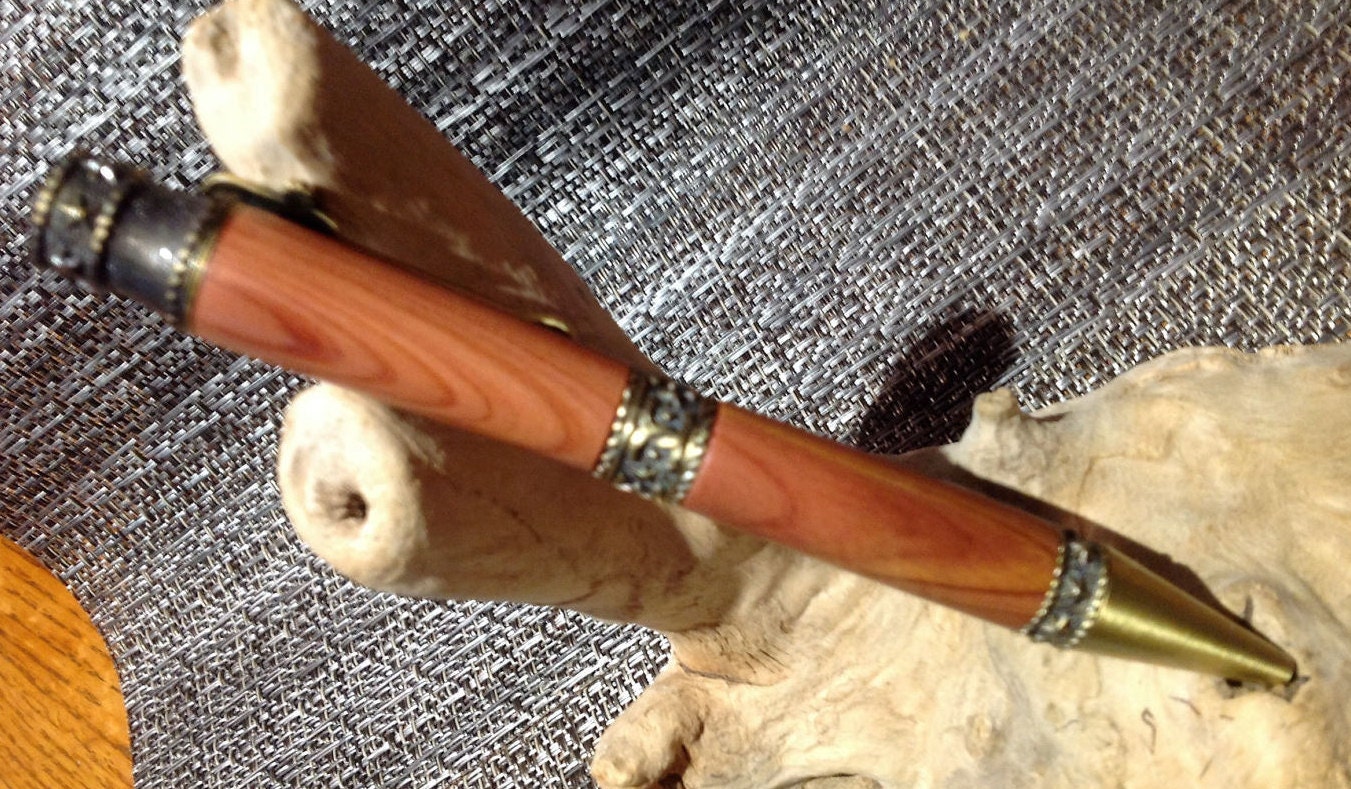This is a Western Style Twist Pen a great gift for the cowboy or cowgirl and comes rosewood gift box. This pen takes a standard Parker refill.
Red Cedar
Juniperus virginiana is a dense slow-growing coniferous evergreen tree that may never become more than a bush on poor soil, but is ordinarily from 5–20 m or 16–66 ft tall, with a short trunk 30–100 cm or 12–39 inches in diameter (rarely to 27 m or 89 ft in diameter, and 170 cm or 67 inches tall). The oldest tree reported, from West Virginia, was 940 years old. The bark is reddish-brown, fibrous, and peels off in narrow strips. The leaves are of two types; sharp, spreading needle-like juvenile leaves 5–10 mm (3⁄16–3⁄8 in) long, and tightly adpressed scale-like adult leaves 2–4 mm (1⁄16–3⁄16 in) long; they are arranged in opposite decussate pairs or occasionally whorls of three. The juvenile leaves are found on young plants up to 3 years old, and as scattered shoots on adult trees, usually in shade. The seed cones are 3–7 mm (1⁄8–1⁄4 in) long, berry-like, dark purple-blue with a white wax cover giving an overall sky-blue color (though the wax often rubs off); they contain one to three (rarely up to four) seeds, and are mature in 6–8 months from pollination. The juniper berry is an important winter food for many birds, which disperse the wingless seeds. The pollen cones are 2–3 mm (1⁄16–1⁄8 in) long and 1.5 mm (1⁄16 in) broad, shedding pollen in late winter or early spring. The trees are usually dioecious, with pollen and seed cones on separate trees.
There are two varieties, which intergrade where they meet:
• Juniperus virginiana var. virginiana is called eastern juniper / redcedar. It is found in eastern North America, from Maine, west to southern Ontario and South Dakota, south to northernmost Florida and southwest into the post oak savannah of east-central Texas. Cones are larger, 4–7 mm (3⁄16–1⁄4 in); scale leaves are acute at apex and bark is red-brown.
• Juniperus virginiana var. silicicola (Small) E.Murray (syn. Sabina silicicola Small, Juniperus silicicola (Small) L.H.Bailey) is known as southern or sand juniper / redcedar. Habitat is along the Atlantic and Gulf coasts from the extreme Southeastern corner of Virginia,[10] south to central Florida and west to southeast Texas. Cones are smaller, 3–4 mm (1⁄8–3⁄16 in); scale leaves are blunt at apex and the bark is orange-brown. It is treated by some authors at the lower rank of variety, while others treat it as a distinct species.

